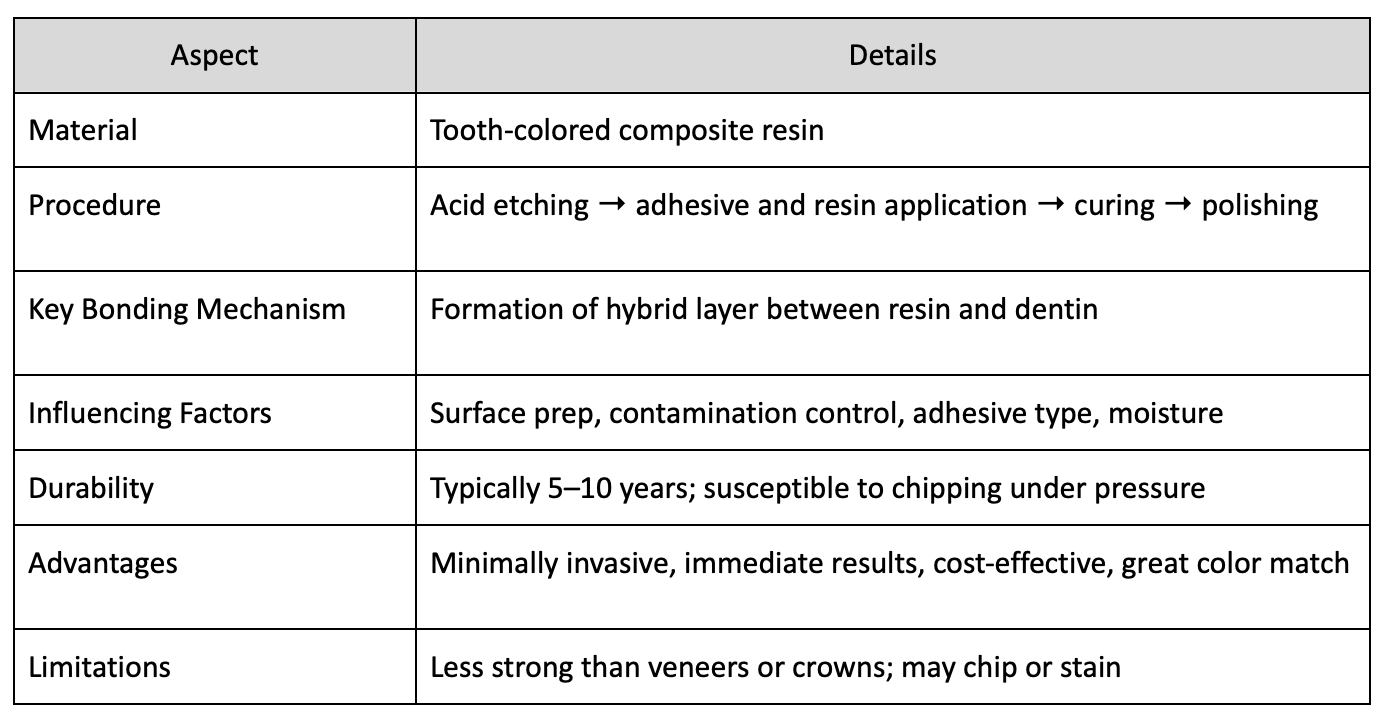Chipped teeth can change how you speak, smile, and feel about your appearance. Cosmetic bonding for chipped teeth is one of the simplest ways to restore that damage. The treatment is quick, gentle, and designed to make your tooth look brand new. At Diablo Dental Group, we specialize in smile restoration that puts you at ease from the first appointment.
What Is Cosmetic Bonding?
Cosmetic bonding, also called dental bonding, uses a tooth-colored composite resin to repair minor damage to teeth. This material is ideal for chipped front teeth, as it can be matched to surrounding enamel. The resin is applied directly, shaped by hand, and hardened with a curing light. Once polished, the tooth looks whole again.
Many patients choose cosmetic bonding for chipped teeth because it doesn’t require removing much natural enamel. Compared to veneers or crowns, bonding is faster and more cost-effective. Most treatments are completed in one visit with little or no numbing required.
How Does Bonding Work?
First, the tooth surface is etched using a mild acid. This creates a micro-rough surface that helps the resin stick. Then, an adhesive is applied to chemically and mechanically bond the resin to the tooth.
Next, your dentist layers composite resin over the adhesive. Each layer is sculpted and cured with a blue light to ensure it hardens properly. Finally, the dentist polishes the area until it looks and feels smooth.
One of the key features of cosmetic bonding for chipped teeth is the hybrid layer. This layer forms when the resin infiltrates the etched surface and hardens. It creates a strong, long-lasting bond that resists wear and tear.
Proper bonding requires a dry, uncontaminated surface. Moisture or saliva during the procedure can weaken the bond. Isolation tools, careful technique, and the right adhesive systems all contribute to the long-term success of the treatment.
Factors Affecting Bond Strength and Longevity
The success of cosmetic bonding for chipped teeth depends on a few important elements:
- Tooth Surface Condition: The surface must be clean and free of contaminants. Even a small amount of blood or saliva can reduce bond strength.
- Smear Layer Management: This layer must be etched and removed properly so that resin can access and penetrate the dentin.
- Adhesive Choice: Some adhesives are more hydrophilic, meaning they perform better on slightly moist surfaces (ScienceDirect Topics).
- Hybrid Layer Integrity: Preventing degradation of the hybrid layer improves durability. Inhibiting enzymes like matrix metalloproteinases (MMPs) may extend the life of the bond.
- Color Matching and Shade Selection: Selecting the right shade improves the look of the tooth and may affect bond performance.
Recent studies stress how important isolation and moisture control are to successful cosmetic bonding for chipped front teeth. Without proper preparation, the resin may not fully adhere, leading to staining or chipping later on.
Effectiveness and Clinical Success
Cosmetic bonding for chipped teeth is ideal for minor to moderate chips in front teeth. The material is durable, although not as strong as porcelain. It holds up well under normal use, but can chip under heavy pressure.
Most cosmetic bonding for chipped teeth lasts between five and ten years. In some cases, small touch-ups may be needed. Patients who avoid biting hard objects, grinding, or using their teeth as tools tend to see better long-term results.
Esthetically, composite resin offers an excellent color match. Dentists can blend shades to ensure the bonded tooth looks like its neighbors. Many people cannot tell the difference between a bonded tooth and a natural one.
Summary Table: Cosmetic Bonding for Chipped Teeth

Patient FAQ About Cosmetic Bonding for Chipped Teeth
Does cosmetic bonding hurt?
No. Most procedures are completely painless. Anesthesia is usually not needed unless the chip is near a nerve or there is existing decay.
Will I feel the bonded area when I talk or eat?
Once polished, the bonded surface is smooth and natural-feeling. Most patients forget it’s even there within a few days.
How long does bonding really last?
With proper care, cosmetic bonding can last five to ten years. Avoid biting hard objects and keep up with dental visits to make it last.
Can I whiten my bonded teeth later?
Whitening doesn’t work on bonding resin. If you’re planning to whiten your teeth, do that first. Your dentist will match the resin to your post-whitening shade.
How do I take care of bonded teeth?
Brush and floss as usual. Don’t use your teeth to open packaging, chew ice, or bite your nails. A night guard is recommended if you grind your teeth.
Will the bonding match my other teeth?
Yes. Composite resin comes in many shades and can be blended to match your natural enamel. The goal is for it to look seamless.
Can bonding fix multiple front teeth or reshape my smile?
Yes. Bonding is a good option for cosmetic contouring or fixing more than one tooth. Your dentist can discuss what’s possible.
Is the resin safe and non-toxic?
Yes. The materials used are biocompatible and safe. Ask your dentist if you’re concerned about BPA or specific ingredients.
What happens if the bonding falls off?
Bonding can be repaired easily. If you notice a chip or feel roughness, call your dentist to schedule a quick touch-up.
How much does cosmetic bonding cost?
It depends on how many teeth need repair and how much shaping is involved. Bonding is generally more affordable than veneers or crowns.
Is bonding covered by insurance?
If the bonding is cosmetic, it may not be covered. If it’s part of a necessary restoration, insurance may reimburse a portion.
Is financing available?
Most dental offices, including Diablo Dental Group, offer financing or payment plans. Ask about options at your consultation.
How long is the appointment?
Cosmetic bonding usually takes 30 to 60 minutes per tooth. You’ll be able to return to your normal routine right after.
Can I eat or drink afterward?
Yes. You can eat once the numbing (if any) wears off. Avoid hard or staining foods for a day to protect the bonding.
Should I get bonding or veneers?
Bonding works well for small chips and simple fixes. Veneers are better for larger cosmetic changes or full smile makeovers.
How does bonding compare to crowns?
Crowns are stronger and used when more of the tooth is damaged. Bonding is less invasive and better for minor front-tooth repairs.
Can bonding be done the same day for a broken tooth?
In many cases, yes. If you chip a front tooth, call right away. Many practices reserve time for same-day smile repairs.
Conclusion
Cosmetic bonding for chipped teeth is a conservative and affordable way to restore your smile. With proper technique and materials, bonding can last for years and provide results that look completely natural. As long as you maintain good oral habits, bonding can be a long-lasting solution.
Your Smile Deserves Better Than a Chip
Let Diablo Dental Group fix your teeth with artistry and precision. Call us today and feel confident tomorrow.

